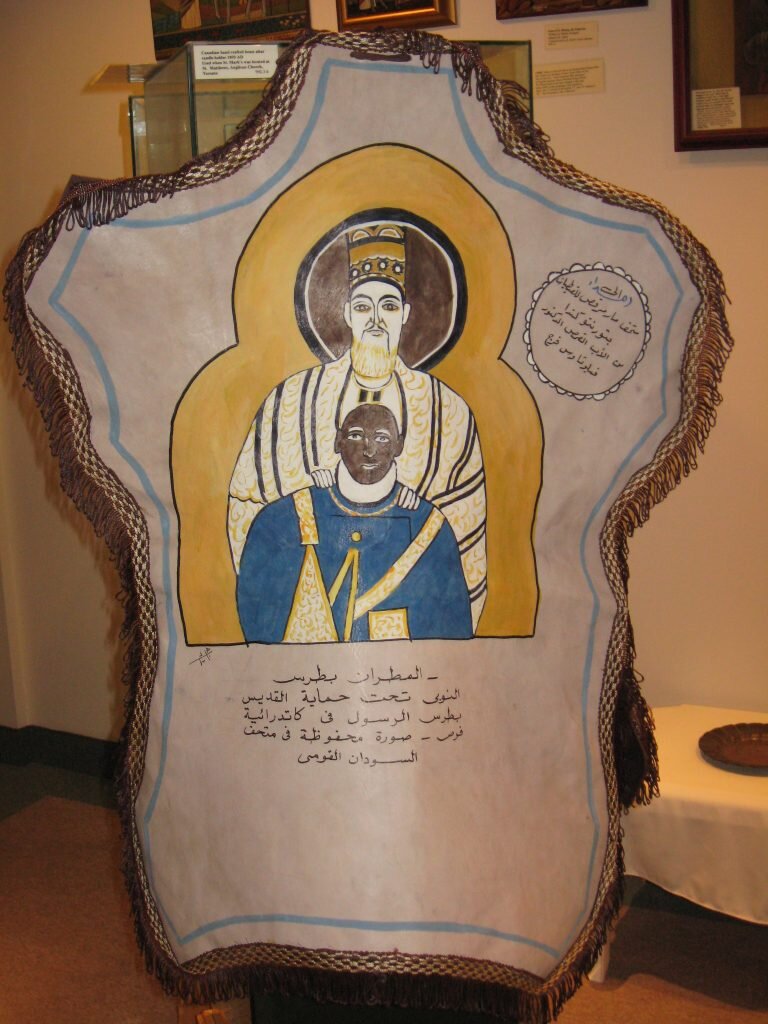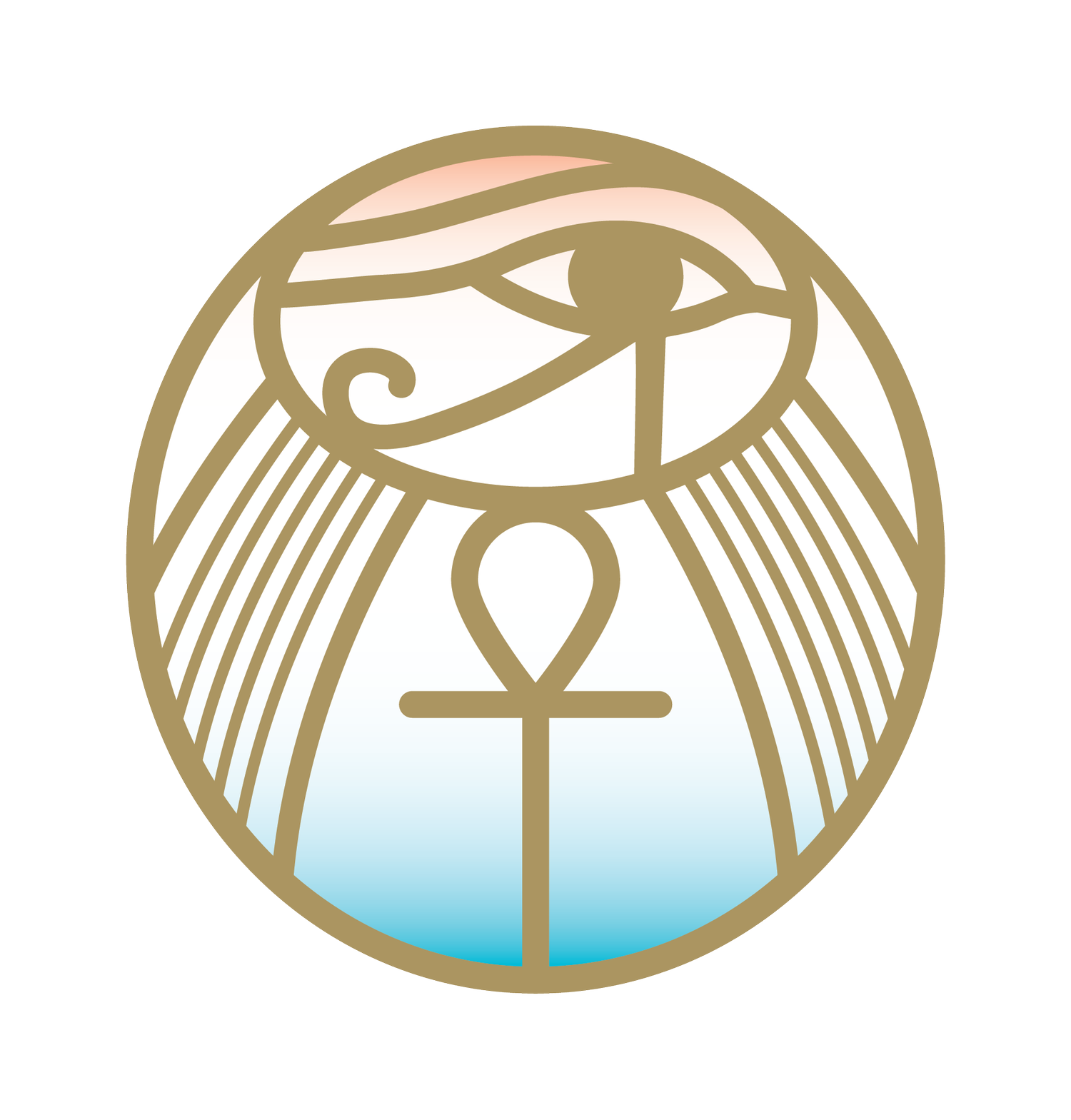
BANNERS ON TANNED CAMEL-SKIN
The five banners on tanned camel-skin depict paintings in the Nubian Cathedral of Faras which was found buried in sand and almost totally intact during the construction of the Great Aswan Dam. Faras, known in ancient times as Pachôras in Greek was a capital city in Northern Nubian Kingdom.
Over one hundred and sixty paintings were salvaged from the flooding of the Nile River in a major international excavation campaign known as “Nubian Campaign” under the auspices of UNESCO.
The Polish archaeological mission (1962-1964) led by the Polish archaeologist Professor Kazimierz Michałowski (1901-1981) discovered these paintings, dating the 7th-13th century in the ruins of the cathedral church of Pachôras. A complex and painstaking process removed the paintings (tempera paint on dry plaster) from the walls of the cathedral before they could be restored and exhibited. Over sixty-seven of these paintings and other historical objects are in the “Professor Kazimierz Michałowski Faras Gallery at the National Museum in Warsaw” ; the remaining paintings and artefacts are in the National Museum of Sudan in Khartoum.
Among other references on the Faras excavations, the Museum’s Cecile Barsoum Reference Library has the catalogue of the Faras collection published by the National Museum in Warsaw: Professor Kazimierz Faras Gallery Guide Book. 2014.
The five banners on tanned camel-skin each depicting one of the Faras cathedral’s wall paintings were created for the Museum.
On the upper right corner of each banner in a circle is inscribed in Arabic: Gift to St. Mark’s Coptic Museum from Fr. Dr. Philotheos
On the lower right corner of each painting is the signature of the artist.
2008.9.2
St. Mary and Jesus Christ protecting Allabas, Nubian Princess
Painting on tanned camel skin banner (2008)
Replica of wall painting Faras Cathedral, Darfour now in National Museum of Sudan
80cm x 61cm
2008.9.3
Three Coptic symbols (eagle) of the Holy Spirit
Paining on tanned camel-skin banner (2008)
Replica stone carving Ain Fara, Faras, Qasr Ibrim (Darfour).
now in National Museum of Sudan
80cm x 61cm
2008.9.1
Metropolitan Peter, the Nubian under the
protection of St. Peter the Apostle
Painting on tanned camel-skin banner (2008)
Replica of wall painting Faras Cathedral, Darfour now in National Museum of Sudan
80cm x 61cm
2008.9.4
St. Mary sitting on a Nubian throne (1000AD) and
of a Nubian Princess (?)
Painting on tanned camel-skin banner (2008)
Replica of wall painting Faras Cathedral, Darfour now in National Museum of Sudan
Part of the original painting fell off and revealed an 800AD image of a Nubian princess protected by Jesus Christ and St. Mary which explains the image of St. Mary with two different coloured slippers and a foot protruding on the right.
80cm x 61cm
2008.9.5
Archangel Michael protecting Queen Theodora
Painting on tanned camel-skin banner (2008)
Replica of one of the oldest wall paintings in the Faras, Cathedral
now in National Museum of Sudan
80cm x 61cm





